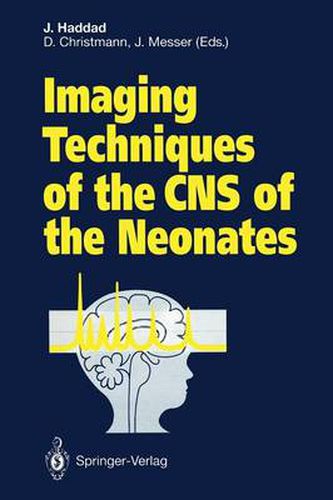Readings Newsletter
Become a Readings Member to make your shopping experience even easier.
Sign in or sign up for free!
You’re not far away from qualifying for FREE standard shipping within Australia
You’ve qualified for FREE standard shipping within Australia
The cart is loading…






This title is printed to order. This book may have been self-published. If so, we cannot guarantee the quality of the content. In the main most books will have gone through the editing process however some may not. We therefore suggest that you be aware of this before ordering this book. If in doubt check either the author or publisher’s details as we are unable to accept any returns unless they are faulty. Please contact us if you have any questions.
There has been increasing interest in neonatal neurology, especially since imaging techniques were introduced in the neonatal ward. Looking at the natural history of imaging techniques, we can identify three main axes of its development. Logically, it was first essential to image the brain morphologically. For this purpose, computed tomography was initially used, followed by ultra sound. However, to improve the quality of the images, magnetic resonance imaging was introduced. Major features of ultrasound and magnetic reso nance imaging are their safety and lack of ionization. Morphological imaging techniques have proved to be insufficient to ex plain the mechanisms underlying CNS injuries. Thus, it was essential to develop functional techniques to assess cerebral hemodynamics and oxy genation. The use of Doppler ultrasound, PET scanning, SPECT scanning and, more recently, NIRS have widened our knowledge of general neurolog ical problems. Finally, to achieve our goal of attaining a better understanding of CNS injuries, it is important to assess cerebral cellular metabolism. Magnetic resonance spectroscopy was introduced to achieve this goal. We hope that this book links these different techniques in order to widen our horizon. The future is promising and bound to provide further develop ments, which however can only be understood if we grasp the present level of development.
$9.00 standard shipping within Australia
FREE standard shipping within Australia for orders over $100.00
Express & International shipping calculated at checkout
This title is printed to order. This book may have been self-published. If so, we cannot guarantee the quality of the content. In the main most books will have gone through the editing process however some may not. We therefore suggest that you be aware of this before ordering this book. If in doubt check either the author or publisher’s details as we are unable to accept any returns unless they are faulty. Please contact us if you have any questions.
There has been increasing interest in neonatal neurology, especially since imaging techniques were introduced in the neonatal ward. Looking at the natural history of imaging techniques, we can identify three main axes of its development. Logically, it was first essential to image the brain morphologically. For this purpose, computed tomography was initially used, followed by ultra sound. However, to improve the quality of the images, magnetic resonance imaging was introduced. Major features of ultrasound and magnetic reso nance imaging are their safety and lack of ionization. Morphological imaging techniques have proved to be insufficient to ex plain the mechanisms underlying CNS injuries. Thus, it was essential to develop functional techniques to assess cerebral hemodynamics and oxy genation. The use of Doppler ultrasound, PET scanning, SPECT scanning and, more recently, NIRS have widened our knowledge of general neurolog ical problems. Finally, to achieve our goal of attaining a better understanding of CNS injuries, it is important to assess cerebral cellular metabolism. Magnetic resonance spectroscopy was introduced to achieve this goal. We hope that this book links these different techniques in order to widen our horizon. The future is promising and bound to provide further develop ments, which however can only be understood if we grasp the present level of development.